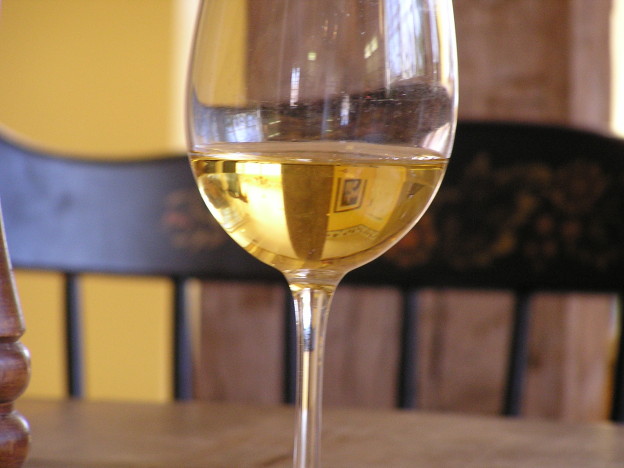Two words: Terroir and Style.
But first, some background.
Grüner Veltliner is indigenous to Austria and is the most widely planted grapevine there, most grown on soil comprising slate, schist and other decomposing rock. The grapes are typically fermented at cool temperatures in stainless steel tanks, resulting in lean, laser-like wines with notes of grapefruit or white pepper, some bottled so young they fizz when opened. Most are like this, but not all (and that includes ours), which is where terroir and house-style come in.
By terroir we mean the unique combination of soil, climate, slope, aspect and farming methods in a specific vineyard that cause wines grown there to be different – perhaps even superior – than those made from the same grape grown elsewhere. You can read more about terroir here.
Our estate vineyard sits at 700 feet above sea level, straddling the border of maritime and continental climates, with a meaningful slope, southwest aspect and 3,000 growing degree days. Our soil is deep silt/clay/loam, well-drained and studded with glacial gravel. We dry farm, adding nothing to the 40+ inches of rain we get each year (we don’t even have irrigation lines). Yes, there may be other places like this, but none exactly like this.
So, where our Grüner grows has a big impact on why it’s so good, which makes the winemaker look brilliant even though this reflects one decision he made long ago. But to be fair, he does a few other things each year that are reflected in our house style.
By style we mean the steps taken with each vintage, from uncrushed grapes through the pour into your glass, resulting in a consistent and even recognizable wine. But it is really only influence, as winemakers don’t make the wine as much as guide Mother Nature, much like a midwife does (some winemakers vigorously disagree, and that shows up in one’s house style, too).
And so, if we combine Mount Salem’s terroir and style, our Grüner Veltliner can be reduced to this haiku:
Austrian grapes
Grown in Hunterdon
Vinified as if in Burgundy
In American oak
This results not in a schizophrenic wine, but rather an elegant and cosmopolitan one with nearly pitch-perfect sense of place. Indeed, if forced to choose only one grape to grow here, it would be Grüner. And that’s not an April Fool’s Joke, either.

 Since 2005
Since 2005